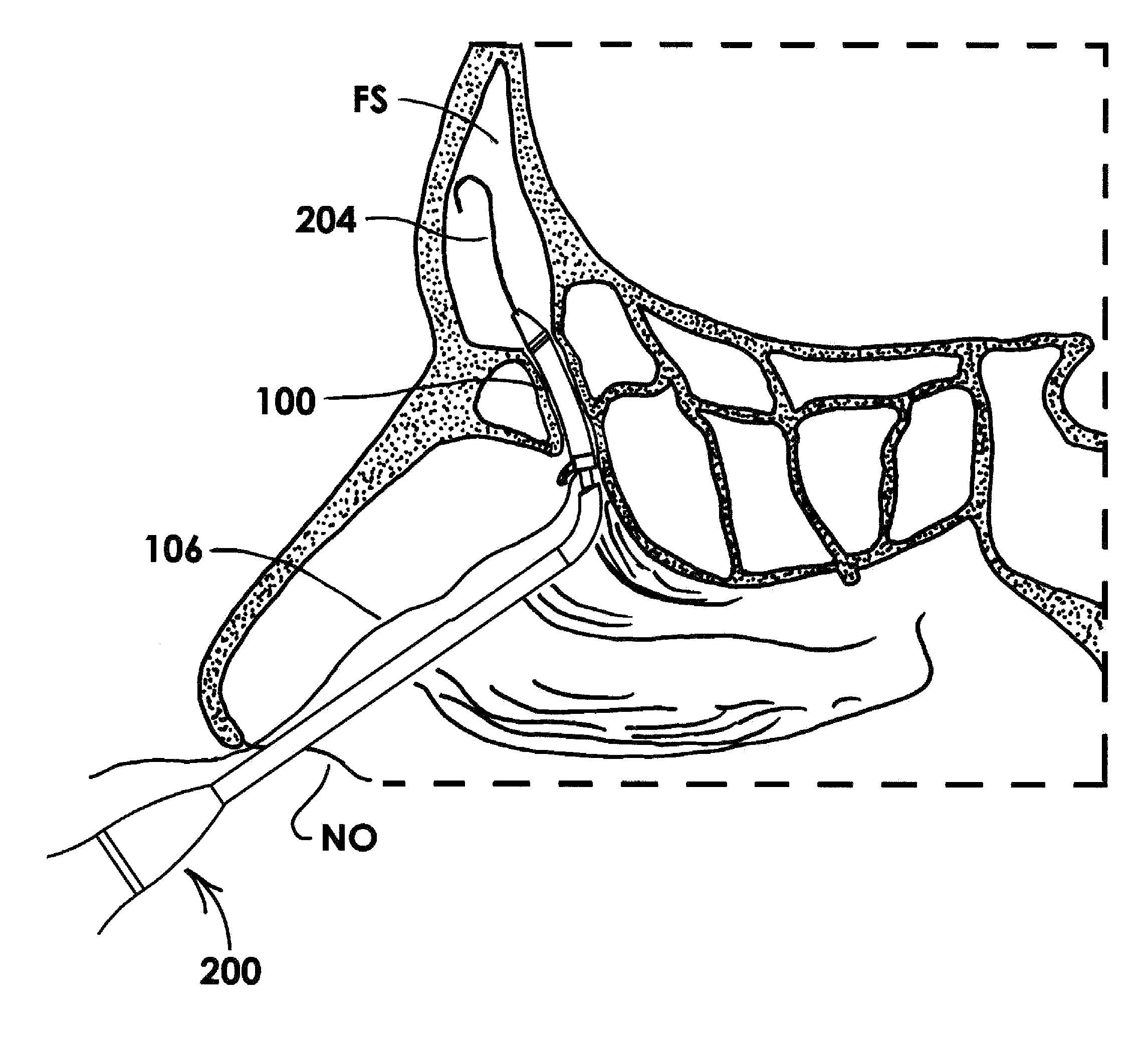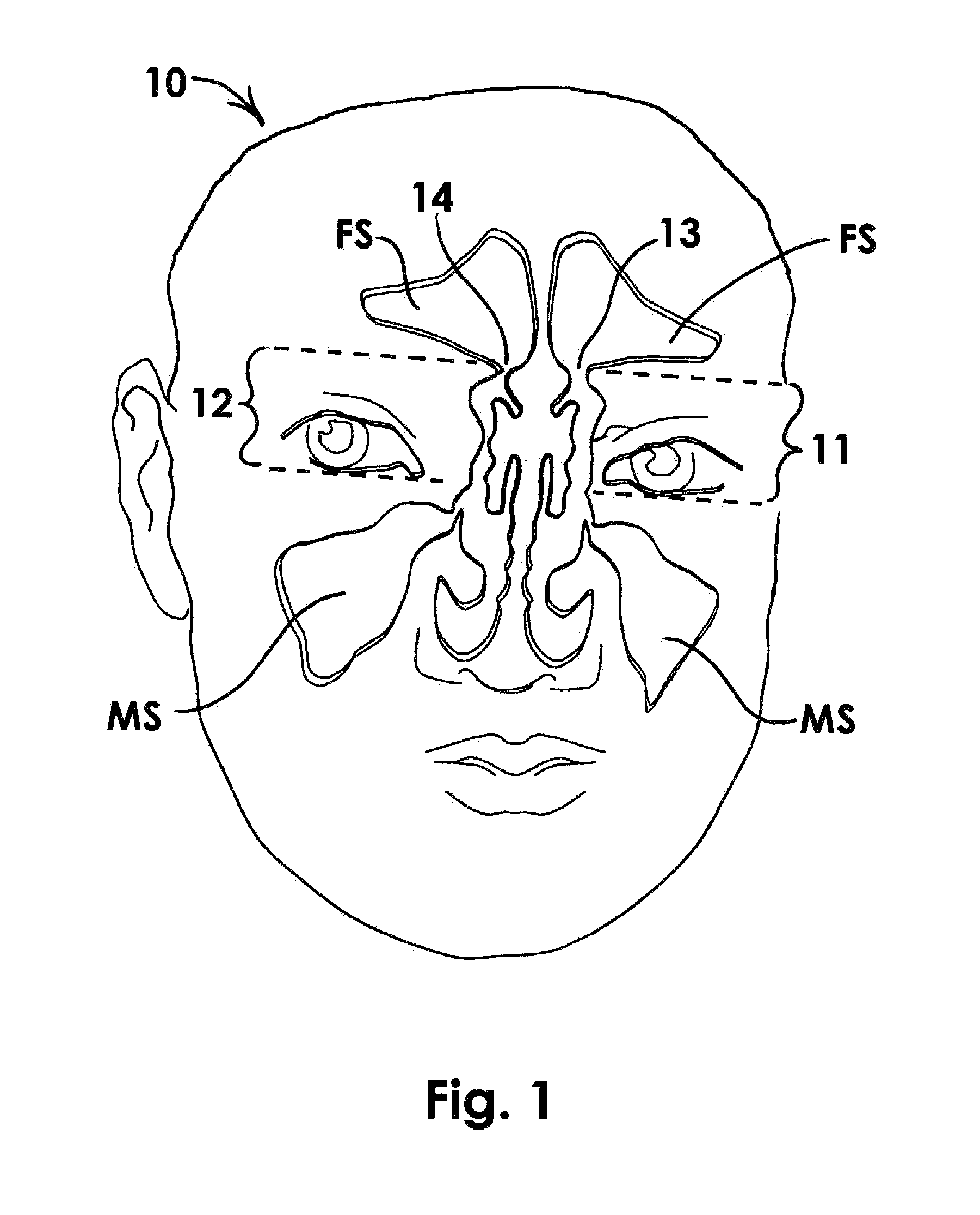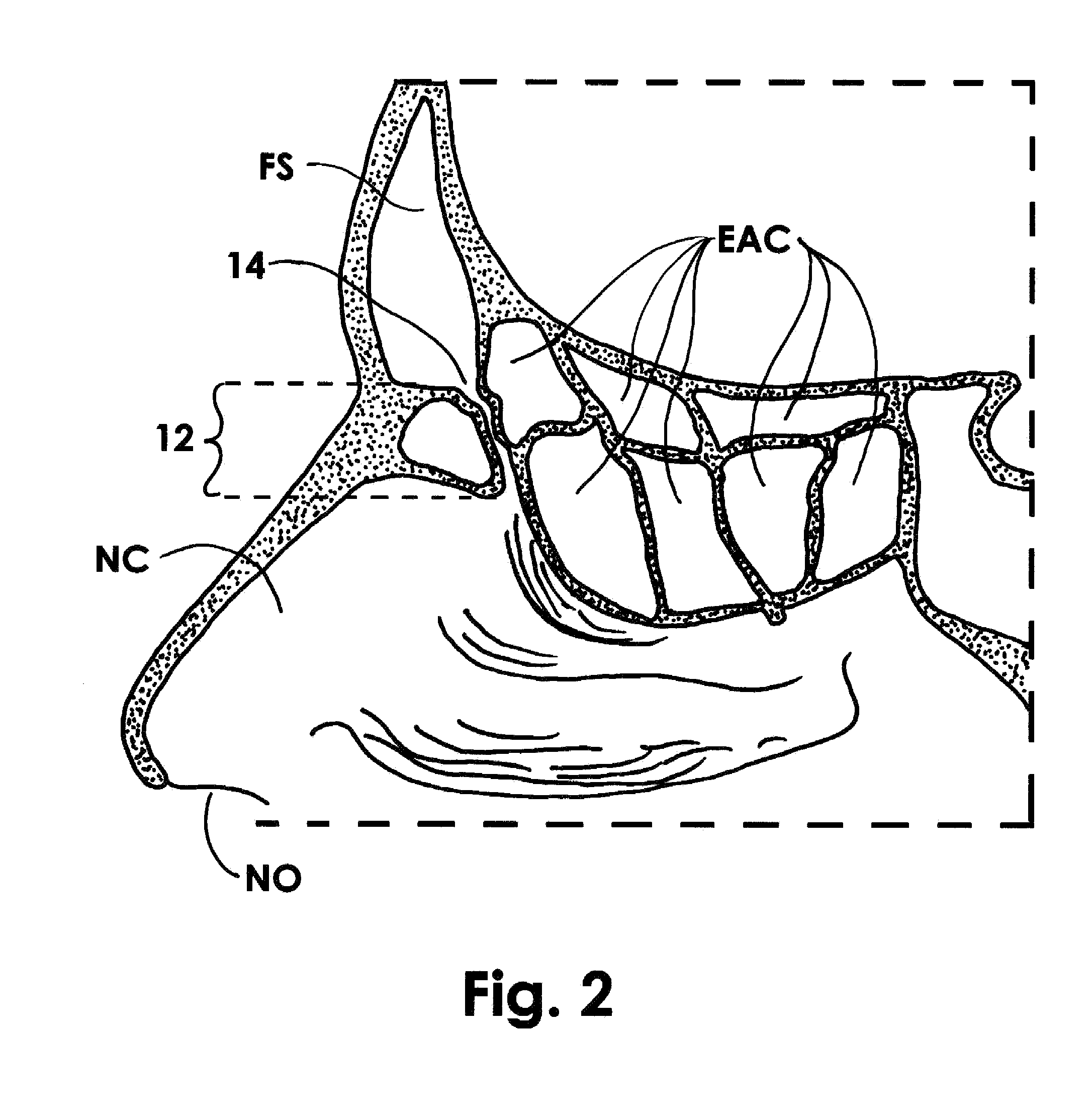Frontal Sinus Recess Dilator
a frontal sinus and dilator technology, applied in the field of frontal sinus recess dilator, can solve the problems of damage to the epithelium that lines the sinuses, blocked passageways which drain through the paranasal sinuses, and mucosal congestion within the paranasal sinuses
- Summary
- Abstract
- Description
- Claims
- Application Information
AI Technical Summary
Benefits of technology
Problems solved by technology
Method used
Image
Examples
example 1
[0193]A batch of stainless steel (Grade 304; iron matrix containing <0.08% C, 17.5-20% Cr, 8-11% Ni, <2% Mn, <1% Si, <0.045% P and <0.03% S) hypotubes having a nominal inside diameter of 0.5 mm (0.020 inch) and an outside diameter of 0.6 mm (0.025 inch) of were cut into sections having a length of 30 cm (1 ft). The cut sections were annealed at one of five different conditions to produce five different types annealed tube sections.
[0194]In the first type, the sections were heated in a vacuum for one hour at 1200±25° F. (650±5° C.). The temperature was then ramped to 1650±25° F. (900±5 C.) and held at that temperature for 25 minutes. Next, the tube sections were quenched in a current of nitrogen gas until the chamber was cooled to 100° F. (40° C.). In the second type, the sections were heated in a vacuum for one hour at 1200±25° F. (650±5° C.). The temperature was then ramped to 1750±25° F. (955±5° C.) and held at that temperature for 25 minutes. Next, the tube sections were quenched...
example 2
Fabrication of Dilators Having Differing Malleabilities
[0202]A series of frontal sinus recess dilators were fabricated with the annealed and non-annealed tube stock prepared in Example 1. First, osmotic engines were prepared. Polyethylene oxide was sifted through a 100-mesh sieve and 8.50 grams was collected in a 250 ml beaker. The polyethylene oxide had a molecular weight of 7 million and was supplied by Colorcon, Inc., West Point, Pa., as Polyox™ grade WSR 303 LEO, NF. Sodium chloride, USP grade, was ground in a mortar with a pestle and passed through a 100 mesh sieve. The sized sodium chloride (15.0 g) was added to the polyethylene oxide. Hydroxypropyl methylcellulose (1.25 g) was then passed through a 100 mesh sieve and added to the weighed powders. The hydroxypropyl methylcellulose was supplied by Dow Chemical Company, Midland, Mich., as grade Methocel™ E5 Premium LV. The three powders were next mixed with a spatula. Anhydrous ethyl alcohol (9 cm3), grade SDA 3A, was slowly add...
example 3
Placement of Dilators Having Differing Malleabilities in Cadaver Frontal Sinus Recesses
[0217]The dilators fabricated in Example 2 were used to assess ease of dilator placement into the frontal sinus recess of a cadaver. The dilators were mounted on a cannula having a slot at the end. The proximal end of the dilator was mounted in the slot. Under endoscopic guidance, the mounted dilator and cannula were then threaded through a nostril into the nasal cavity and advanced to the frontal sinus recess. Ease of placement of the dilator into the frontal sinus recess was then assessed by a Board Certified otolaryngologist, head and neck surgeon. The dilator fabricated with the non-annealed hypotube (hypotube malleability of 17.2 Newtons) was judged to be too stiff to maneuver into the frontal sinus recess. The dilator fabricated with the hypotube annealed at 1650° F. (hypotube malleability of 5.4 Newtons) was also judged to be too stiff to maneuver into the frontal sinus recess. The dilators...
PUM
 Login to View More
Login to View More Abstract
Description
Claims
Application Information
 Login to View More
Login to View More - R&D
- Intellectual Property
- Life Sciences
- Materials
- Tech Scout
- Unparalleled Data Quality
- Higher Quality Content
- 60% Fewer Hallucinations
Browse by: Latest US Patents, China's latest patents, Technical Efficacy Thesaurus, Application Domain, Technology Topic, Popular Technical Reports.
© 2025 PatSnap. All rights reserved.Legal|Privacy policy|Modern Slavery Act Transparency Statement|Sitemap|About US| Contact US: help@patsnap.com



